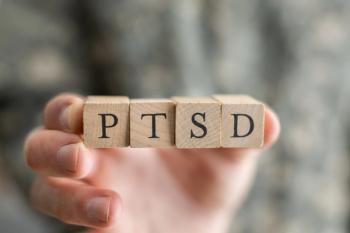
Introduction: Mental Health Correlates of Trauma
Over half of the population is exposed to at least one lifetime traumatic event, yet relatively few of those exposed have lasting psychiatric sequelae. As psychiatrists, we attend to the needs of those who suffer.
SPECIAL REPORT: TRAUMA IN PSYCHIATRIC PRACTICE
Over half of the population is exposed to at least one lifetime traumatic event, yet relatively few of those exposed have lasting psychiatric sequelae. As psychiatrists, we attend to the needs of those who suffer. In this Special Report, the authors point out that psychiatrists’ clinical practice and trauma research focus more often on disease states and less often on enhancing resiliency factors. They present an approach for identifying trauma exposure within a brief psychiatric evaluation and discuss proposed DSM-5 criteria for developmental trauma disorder in youths.
Trauma may be experienced throughout life and in many different contexts. Mass shootings and bombings, wars, and natural and man-made disasters all affect large numbers of people and command international media attention. However, much trauma is experienced privately-childhood maltreatment, sexual and physical assault, witnessing violence and death, surviving a life-threatening accident or illness, or suddenly losing a loved one. When problems develop, caregivers need to be sensitive to the pain of exposing raw memories as they explore health and mental health issues associated with extreme stress.
Mental health correlates of trauma include PTSD and other anxiety disorders, mood disorders, and substance use disorders; comorbidity is the rule. Sorting out PTSD symptoms from those of other anxiety, mood, and somatoform disorders is often challenging. Although the type of disaster is not necessarily related to PTSD, North and colleagues1 found that certain demographic factors do predict PTSD, as do a mental health history and being the victim of or a witness to trauma.
Some populations may warrant extra attention by clinicians after trauma exposure. In its consideration of the elderly-who were among the groups at high risk for morbidity after Hurricane Katrina-the American Association of Geriatric Psychiatry noted that the absence of family and other support may be the single most critical factor for adverse outcomes.2 PTSD may be underreported in some older adults as a result of alexithymia. Clinicians should always explore life trauma in the elderly. Because of their emotional salience, traumatic events may be remembered quite well, even in persons with cognitive impairment.
While large-scale epidemiological studies of PTSD in children are lacking, research suggests that children exposed to trauma may have higher PTSD rates than adults.3 PTSD may be overlooked in children, however, because it can present differently than in adults, with disorganized behavior, reenactment of trauma themes in play, and vague dreams.
With respect to race and ethnicity, the prevalence of PTSD was found to be highest among blacks in a large national survey. All minorities were less likely to seek treatment than whites.4
Addictive disorders have long been associated with trauma. Traumatic experience, with or without a diagnosis of PTSD, increases the prevalence of later development of substance use disorders. This is especially true of childhood sexual abuse.5 About half of those with PTSD have a comorbid substance use disorder, and one-fourth of adults in substance abuse treatment also carry a diagnosis of PTSD. This subpopulation with comorbid conditions most often misuses alcohol, followed by cocaine, cannabis, and opioids. Those with combined disorders have a worse overall prognosis than do persons with either disorder alone.6 PTSD symptoms themselves are related to increased risk of relapse to substance use and increased severity of use during relapse. Treatment interventions that address both disorders simultaneously provide improved outcomes for both disorders.
Physical health may also be influenced by trauma and PTSD. The role of stressful life events in increasing risk for illness was noted by Holmes in his groundbreaking studies of tuberculosis in the 1950s.7 His group found associations between ketosteroid levels, advanced tuberculosis, and anxiety and depression.
More recent studies have noted diverse changes in the hypothalamic-pituitary-adrenal axis after trauma exposure.8 Alterations in the immune system after psychological stress and in PTSD include changes in cytokines, T cells, and tumor necrosis factor, which may increase susceptibility to infection or trigger inflammatory conditions.
Studies have long documented autonomic nervous system dysregulation, particularly in the cardiovascular system, among PTSD patients and also among trauma survivors, irrespective of PTSD status.9-11 These changes in bodily homeostasis may contribute to increased rates of health problems noted in trauma survivors. Lauterbach and colleagues12 found that PTSD was predictive of poor health: arthritis, respiratory problems, hypertension, lupus, GI problems, and kidney/liver disease are especially more common.
As psychiatrists, we practice holistic medicine. Our traumatized patients depend on us to uncover their emotional pain delicately, to understand its effects on their minds and bodies, and to recognize and draw on their unique strengths and vulnerabilities as we promote recovery. Our healing art blends talk therapy with often complex pharmacotherapies, with a positive outcome rewarding to both healer and trauma survivor.
Disclosures:
References
1. North CS, Oliver J, Pandya A. Examining a comprehensive model of disaster-related posttraumatic stress disorder in systematically studied survivors of 10 disasters. Am J Public Health. 2012;102:e40-e48.
2. Sakauye KM, Streim JE, Kennedy GJ, et al. AAGP position statement: disaster preparedness for older Americans: critical issues for the preservation of mental health. Am J Geriatr Psychiatry. 2009;17:916-924.
3. Gabbay V, Oatis MD, Silva RR, Hirsch G. Epidemiological aspects of PTSD in children and adolescents. In: Silva RR, ed. Posttraumatic Stress Disorder in Children and Adolescents: Handbook. New York: Norton; 2004:1-17.
4. Roberts AL, Gilman SE, Breslau J, et al. Race/ethnic differenes in exposure to traumatic events, development of post-traumatic stress disorder, and treatment-seeking for post-traumatic stress disorder in the United States. Psychol Med. 2011;41:71-83.
5. Triffleman EG, Marmar CR, Delucchi KL, Ronfeldt H. Childhood trauma and posttraumatic stress disorder in substance abuse inpatients. J Nerv Ment Dis. 1995;183:172-176.
6. Khoury L, Tang YL, Bradley B, et al. Substance abuse, childhood traumatic experience, and posttraumatic stress disorder in an urban civilian population. Depress Anxiety. 2010;27:1077-1086.
7. Lerner BH. Can stress cause disease? Revisiting the tuberculosis research of Thomas Holmes, 1949-1961. Ann Intern Med. 1996;124:673-680.
8. Klaassens ER, Giltay EJ, Cuijpers P, et al. Adulthood trauma and HPA-axis functioning in healthy subjects and PTSD patients: a meta-analysis. Psychoneuroendocrinology. 2012;37:317-331.
9. Pitman RK, Orr SP, Forgue DF, et al. Psychophysiological assessment of posttraumatic stress disorder imagery in Vietnam combat veterans. Arch Gen Psychiatry. 1987;44:970-975.
10. Shalev AY, Peri T, Gelpin E, et al. Psychophysiologic assessment of mental imagery of stressful events in Israeli civilian posttraumatic stress disorder patients. Compr Psychiatry. 1997;38:269-273.
11. Tucker PM, Pfefferbaum B, North CS, et al. Physiological reactivity despite emotional resilience several years after direct exposure to terrorism. Am J Psychiatry. 2007;164:230-235.
12. Lauterbach D, Vora R, Rakow M. The relationship between posttraumatic stress disorder and self-reported health problems. Psychosom Med. 2005;67:939-947.
Newsletter
Receive trusted psychiatric news, expert analysis, and clinical insights — subscribe today to support your practice and your patients.














